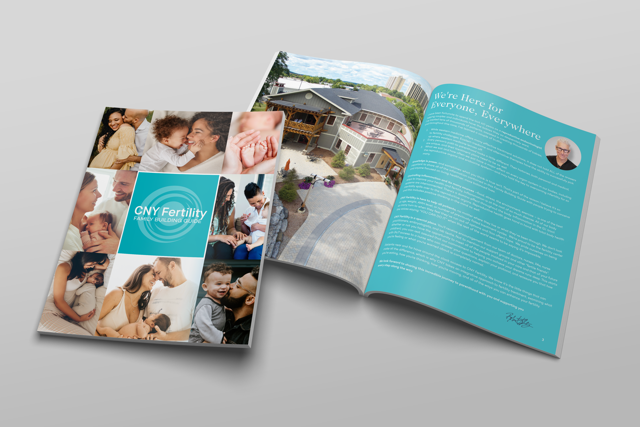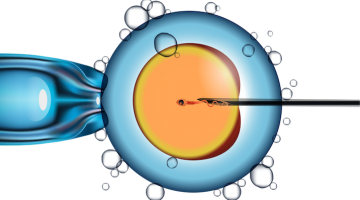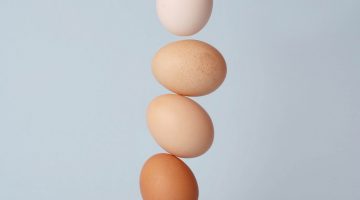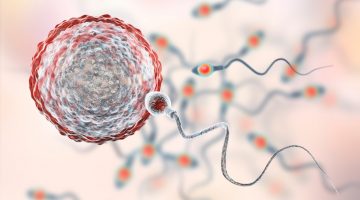Chances of Getting Pregnant by Age

Many factors influence a woman’s ability to get pregnant. Infertility can result from both male and female factors, but one of the most significant predictors of fertility is age.
While age plays a major role in a woman’s chances of conceiving, whether naturally or through assisted reproductive technologies such as in vitro fertilization (IVF), it is not the only factor that matters. At CNY Fertility, we take an individualized approach to care, assessing each patient’s unique circumstances to determine which treatment offers the best chance of success.
In this article, we will explore what research shows about how age affects fertility and the likelihood of conception. However, the most accurate way to understand your personal fertility and chances of getting pregnant is to schedule a consultation and fertility assessment with our clinical team.
Chance of Getting Pregnant by Age per Month
The likelihood of getting pregnant each month changes significantly as a woman ages.
As shown in the figure below, fertility declines most sharply between the ages of 35 and 40.
During this period, a woman’s chances of conceiving drop from about 25% at the peak of her fertility to less than 5% by age 40. Unfortunately, fertility continues to decline beyond this point.

Chance of Getting Pregnant by Age Within 12 Months
Infertility is commonly defined as the inability to conceive after 12 months or more of regular, unprotected intercourse.
A woman’s chances of getting pregnant naturally decrease with age, and as a result, the definition of infertility also changes.
For women over the age of 35, fertility specialists may diagnose infertility after just six months of trying to conceive.
Understanding your chances of getting pregnant at different ages is essential for determining when to seek the guidance of a fertility specialist.
The figure below illustrates women’s odds of conceiving naturally within 12 months at each age .
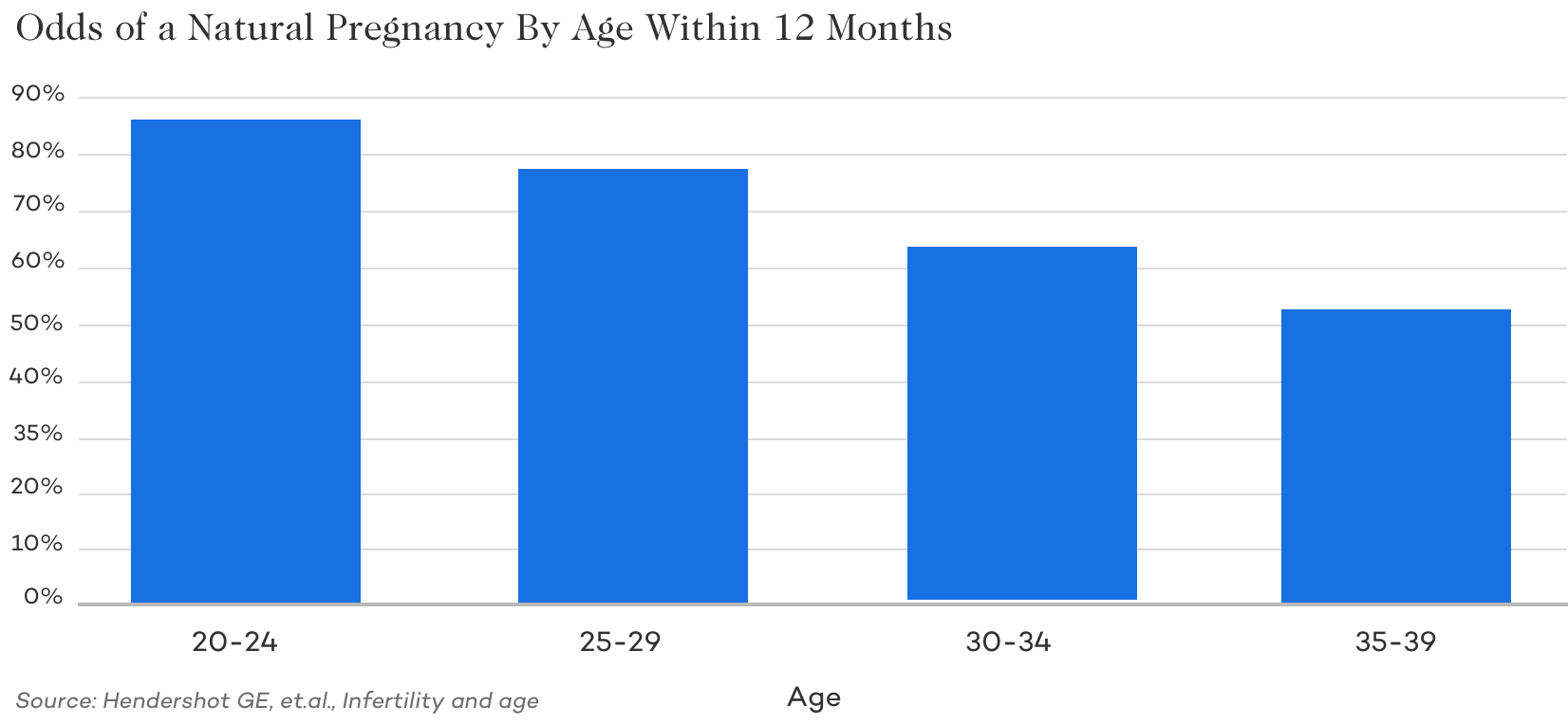
Odds of Infertility by Age
Now that we’ve reviewed a woman’s chances of getting pregnant at different ages, it’s also important to understand how the likelihood of infertility changes over time.
As you might expect based on the previous data, the odds of infertility increase with age. In her early twenties, a woman has about a 7% chance of being infertile, most often due to non-age-related factors such as PCOS, endometriosis, or male infertility.
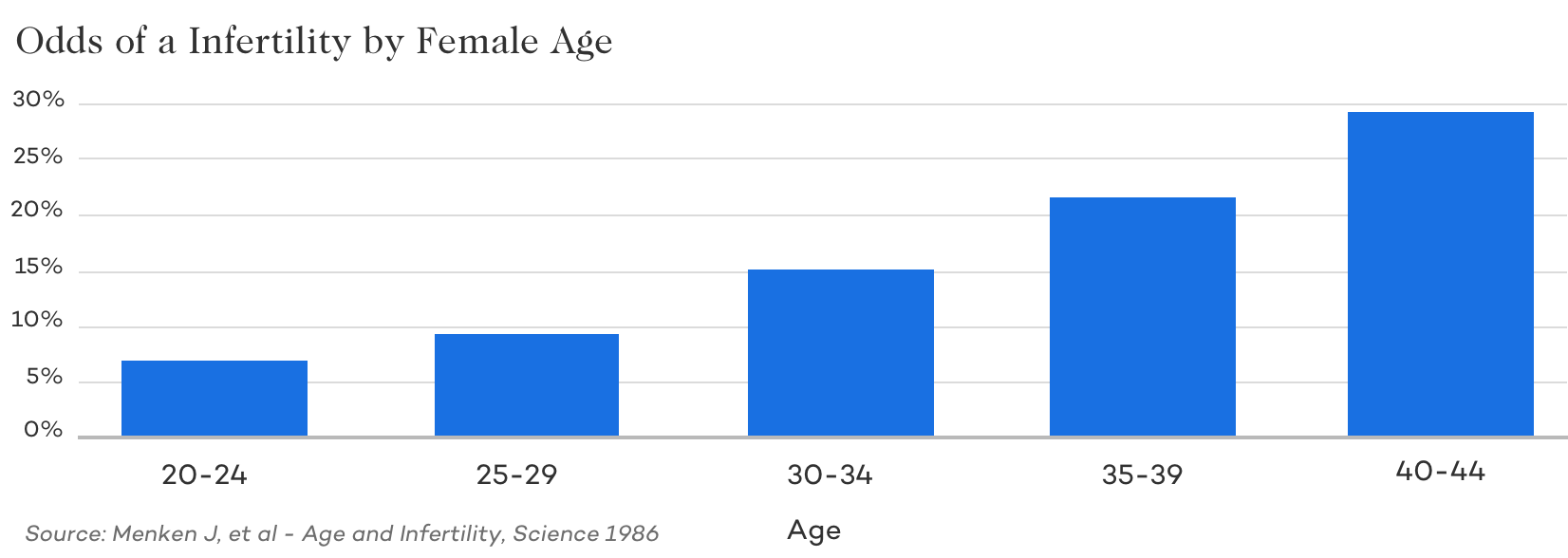
What Causes Fertility to Decrease as Women Age
A woman’s chances of getting pregnant at any given age are shaped by multiple factors. Below, we’ll explore some of the most significant influences.
Ovarian Reserve
Ovarian reserve refers to the number of eggs remaining in a woman’s ovaries. From before birth, a woman’s lifetime supply of eggs is already established. Female fetuses have all the eggs they will ever possess while still in the womb.
Once a woman reaches puberty, about a thousand eggs begin to develop each month. However, only one typically matures fully and is released during ovulation. While the others naturally degenerate.
This ongoing process causes a gradual decline in ovarian reserve, with the number of available eggs decreasing significantly over time as a woman ages.
While ovarian reserve does not directly measure egg quality, it often correlates with both egg quality and the likelihood of achieving pregnancy.
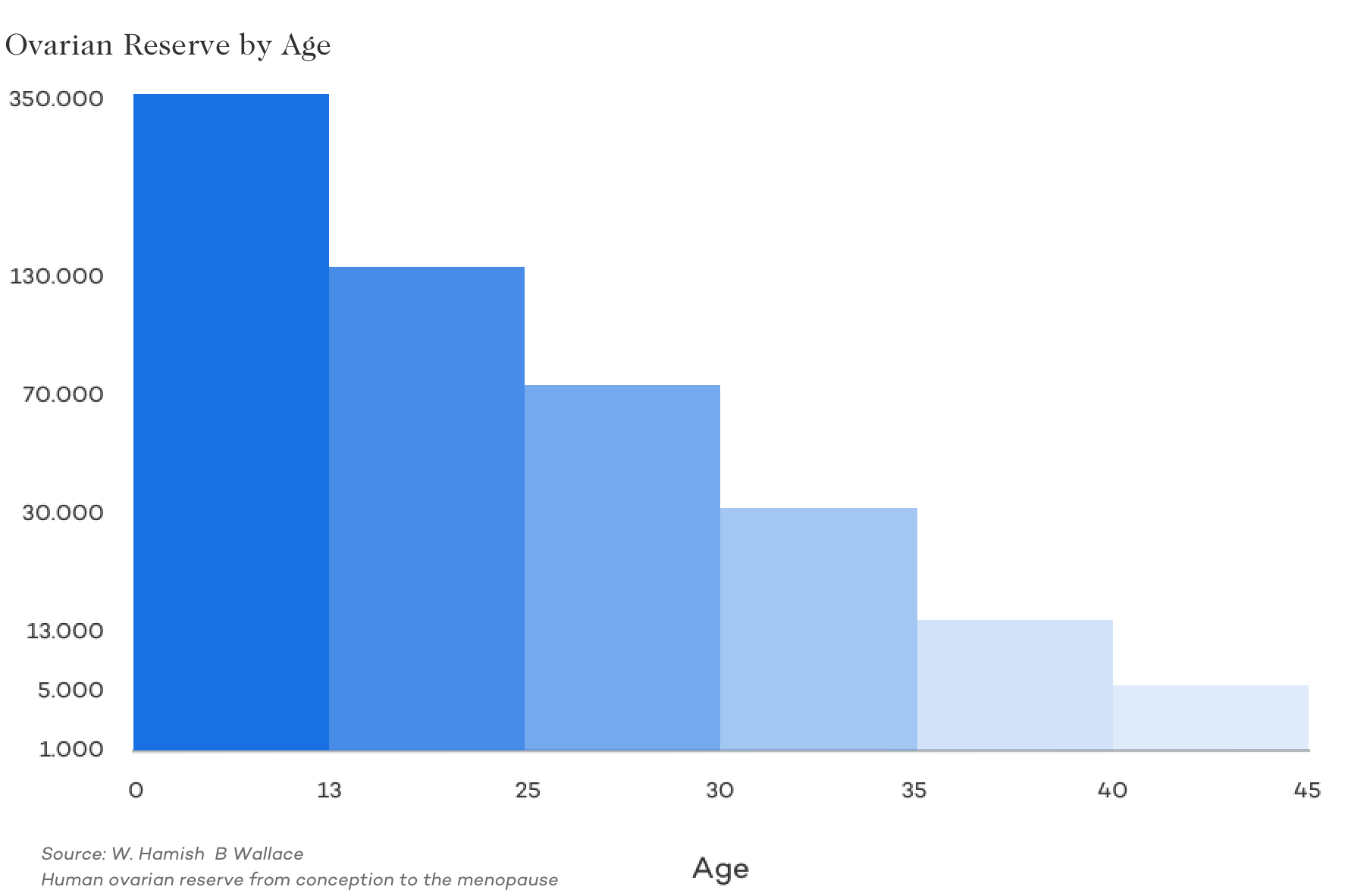
The most common way to assess ovarian reserve is through the Anti-Müllerian Hormone (AMH) test.
AMH is a protein hormone produced by specialized cells within the ovarian follicles, where eggs develop. Measuring AMH levels in the blood helps estimate the number of follicles inside the ovaries, offering insight into a woman’s remaining egg supply and how her body might respond to fertility medications.
Each month, many eggs are naturally lost. As a woman ages, she has fewer eggs available to recruit, meaning fewer follicles begin to develop, leading to a gradual decline in AMH levels over time.
Key points about AMH and fertility:
AMH helps estimate ovarian reserve: Higher AMH levels generally reflect a greater number of available eggs.
Lower AMH levels are linked to fewer developing follicles and may suggest diminished ovarian reserve.
AMH can help predict response to fertility treatments like IVF or egg freezing.
AMH levels naturally decline with age, often starting in the early 30s and continuing through menopause.
Lifestyle and health factors such as BMI, vitamin D levels, alcohol consumption, smoking, and more may also influence AMH levels.
Higher AMH levels indicate that more follicles and eggs are developing that month, suggesting a greater potential to produce multiple high-quality eggs during an egg freezing, injectable IUI, or IVF cycle.
For most fertile women:
Normal AMH range: 1.0–4.0 ng/ml
Low AMH: Below 1.0 ng/ml, often signaling diminished ovarian reserve
It’s important to remember that AMH levels can fluctuate from month to month and may improve with lifestyle changes or targeted fertility treatments.

Genetic Abnormalities
Another key reason fertility declines with age is the increasing likelihood of chromosomal abnormalities in a woman’s eggs and, as a result, in the embryos they create.
As eggs get older, the processes that ensure proper chromosome division become less reliable. This leads to a higher rate of abnormalities such as missing or extra chromosomes, a condition known as aneuploidy.
These chromosomal errors can prevent fertilization, stop embryo development, or cause miscarriage if implantation occurs.

Getting Pregnant with IVF by Age
Now that we’ve looked at how and why natural fertility declines with age, the next question is whether in vitro fertilization (IVF) can help overcome those challenges.
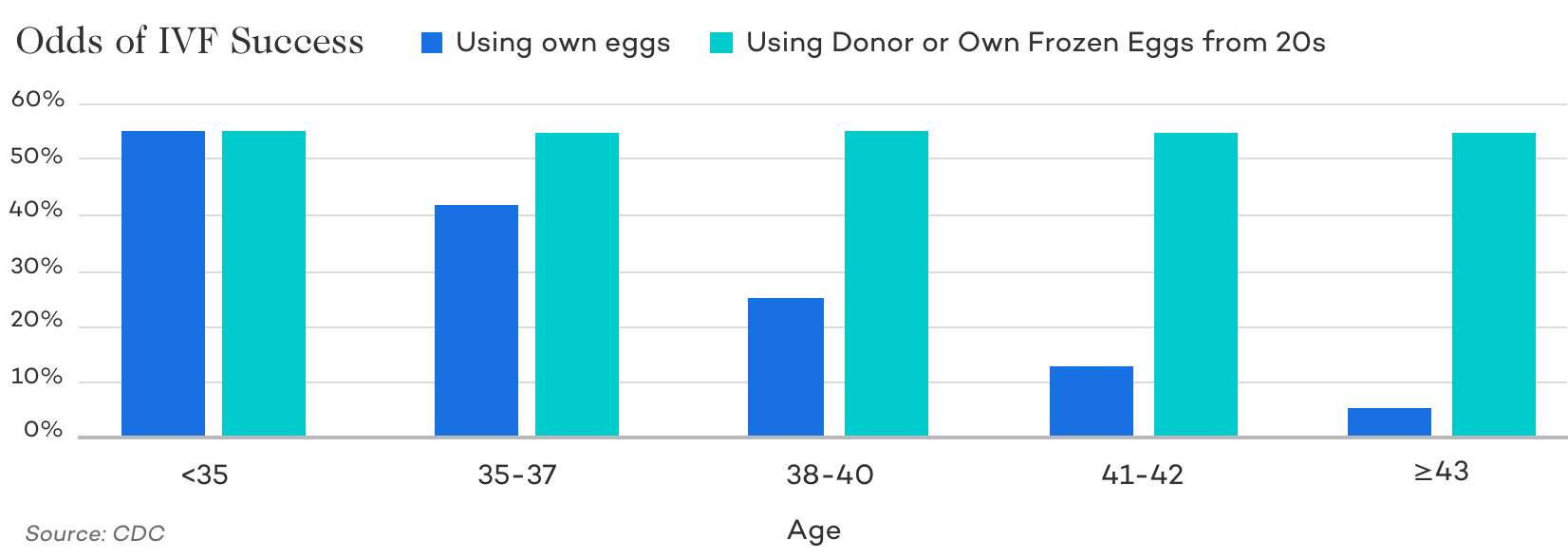
As data from the CDC shows , IVF significantly improves the chances of pregnancy at all ages.
However, age still plays a significant role in determining success, primarily because egg quality declines over time.
Since egg quality has a greater impact on IVF outcomes than the uterine environment, using younger eggs, whether through donor eggs or those frozen earlier in life, can yield success rates largely independent of age.
Fertility preservation through egg and embryo freezing can therefore be a powerful way to maintain higher pregnancy potential as a woman gets older.
Chances of Getting Pregnant by Age: The Bottom Line
While fertility varies from person to person, it is clear that the chances of getting pregnant, both naturally and through fertility treatments, decline with age.
Yet, many women in their late thirties and forties go on to conceive and have healthy babies, whether naturally or with the help of a fertility specialist. One of the biggest obstacles for many is cost. IVF, donor eggs, and egg freezing can vary significantly in price depending on the clinic. So it is important to compare options carefully.
At CNY Fertility, we are proud to be the nation’s most affordable fertility clinic, offering transparent pricing and in-house financing to make treatment more attainable.
If you are ready to take the next step, schedule a consultation with our team and learn how CNY Fertility can help you make your genes come true™.



